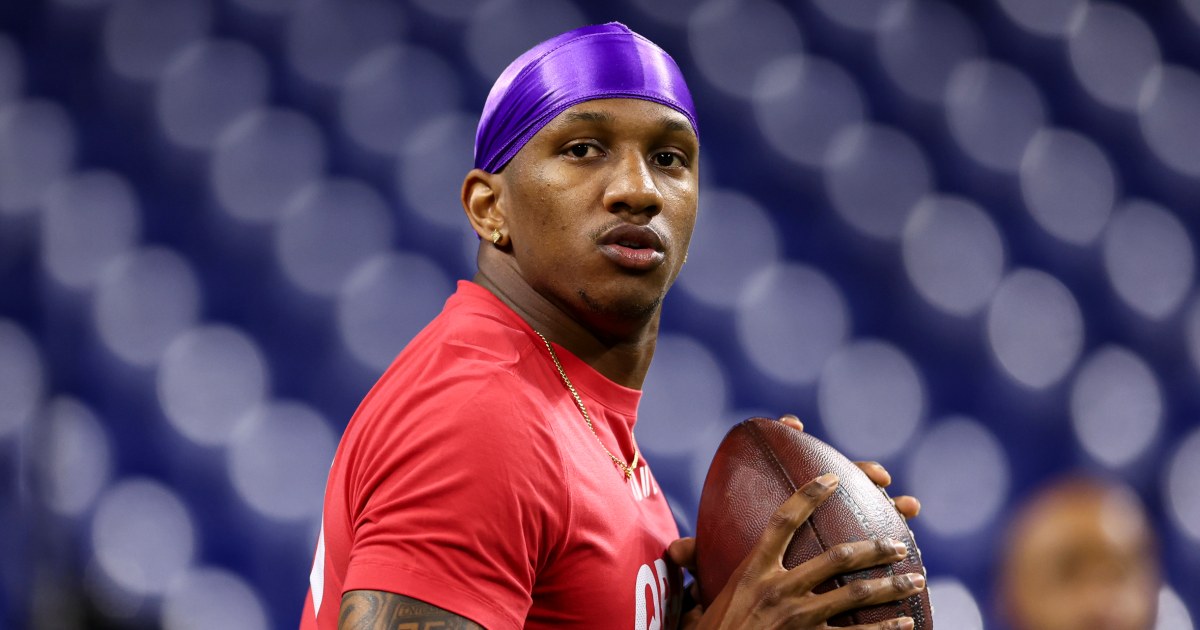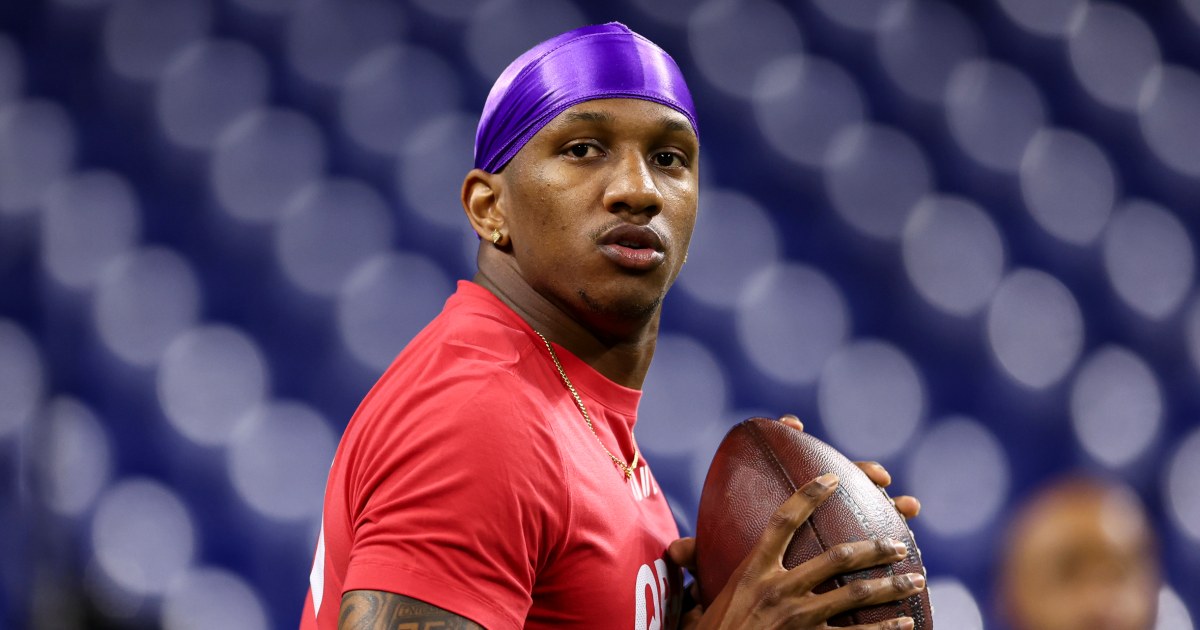Kirk Cousins Benching Calls Attention to QB Succession Plan Pitfalls: The recent benching of Minnesota Vikings quarterback Kirk Cousins has ignited a crucial discussion about the complexities and potential pitfalls inherent in NFL quarterback succession planning. This unexpected move throws a spotlight not only on Cousins’ immediate future but also on the broader challenges faced by teams in navigating the transition at the most important position on the field.
The Vikings’ decision, influenced by a combination of on-field performance and strategic considerations, serves as a compelling case study for analyzing the intricacies of quarterback management in professional football.
This analysis will delve into the specifics of Cousins’ benching, examining the Vikings’ rationale and the broader implications for their team dynamics and long-term strategy. We will compare the Vikings’ approach to quarterback development with other NFL franchises, highlighting both successful and unsuccessful examples of succession planning. The discussion will also explore the potential impact on Cousins’ career and offer insights into best practices for NFL teams seeking to effectively manage the crucial quarterback position.
The Minnesota Vikings’ Decision to Bench Kirk Cousins
The Minnesota Vikings’ decision to bench Kirk Cousins during a late-season game sparked considerable debate regarding quarterback succession planning in the NFL. This move, while seemingly abrupt, reflects a complex interplay of factors including team performance, the evaluation of future potential, and the inherent risks and rewards of transitioning quarterbacks.
Circumstances Surrounding Cousins’ Benching
The Vikings’ decision to bench Cousins wasn’t a spontaneous one. It followed a series of inconsistent performances throughout the season, culminating in a crucial game where the team’s offensive struggles became glaringly apparent. While specific game details would need to be referenced from game reports and analysis, the general context points to a decline in Cousins’ efficiency, potentially due to factors such as offensive line play or a mismatch with the team’s overall strategy.
The benching itself occurred at a point in the game where the outcome seemed heavily influenced by the team’s offensive shortcomings. This suggests a strategic move by the coaching staff to evaluate alternative options and possibly gain a clearer understanding of the team’s strengths and weaknesses going forward.
Cousins’ Season Performance Timeline

A detailed analysis of Cousins’ performance throughout the season would reveal a pattern of ups and downs. Key games would show periods of high efficiency and strong performances, alongside games characterized by turnovers or an inability to lead the team to victory. Statistics such as completion percentage, yards per attempt, touchdown-to-interception ratio, and quarterback rating would provide quantitative evidence to support this analysis.
Comparing his performance to previous seasons would further illuminate any trends in his play. For example, a decline in key statistics compared to previous years would strengthen the argument for the benching decision.
Alternative Quarterback Strategies in Similar Situations
Many NFL teams have faced similar situations, prompting various strategic responses. Some teams might opt for a gradual transition, gradually increasing the playing time of a younger quarterback while still utilizing the veteran’s experience. Others might opt for a more decisive switch, particularly if the veteran’s performance shows a significant decline. Examples include the Green Bay Packers’ transition from Brett Favre to Aaron Rodgers, a gradual process, and the New England Patriots’ switch from Tom Brady to Mac Jones, a more abrupt shift.
The success of these strategies varies significantly based on several factors, including the readiness of the younger quarterback, the veteran’s willingness to support the transition, and the team’s overall coaching and support system.
Analyzing the Vikings’ Quarterback Succession Plan: Kirk Cousins Benching Calls Attention To QB Succession Plan Pitfalls
The benching of Kirk Cousins suggests the Vikings are actively considering their long-term quarterback strategy. This analysis explores the Vikings’ approach, compares it to other franchises, and assesses potential risks and rewards associated with different strategies.
The Vikings’ Approach to Quarterback Development
The Vikings’ actions indicate a proactive, albeit potentially risky, approach to quarterback succession. By benching Cousins, they are signaling a willingness to explore alternatives and evaluate their options for the future. This approach contrasts with teams that might opt for a longer-term commitment to a veteran quarterback, even if performance falters. The specific details of their plan, including the identification and development of potential successors, remain largely unknown, however the benching itself serves as a significant indication of their intentions.
Comparison with Other NFL Franchises
Comparing the Vikings’ approach to other NFL franchises reveals a spectrum of strategies. Some teams prioritize drafting and developing young quarterbacks early, investing significant resources in their training and development. Others favor acquiring established veterans through free agency or trades, prioritizing immediate success over long-term development. Still others might adopt a hybrid approach, combining both strategies. The success of each approach depends heavily on factors such as the availability of talented quarterbacks, the team’s overall coaching staff, and the specific needs of the team.
Risks and Rewards of Quarterback Succession Strategies

Different quarterback succession strategies carry distinct risks and rewards. A gradual transition allows for smoother integration of the younger quarterback, minimizing disruption to team dynamics. However, it may prolong a period of inconsistent performance. An abrupt change can inject immediate energy and a new dynamic, but risks significant disruption and a potential decline in team performance if the new quarterback is not ready.
The recent benching of Kirk Cousins highlights the complexities of quarterback succession planning in the NFL. The unexpected outbursts, like the incident where Daniel Dubois storms ring after Oleksandr Usyk’s win over Tyson , underscore how high-stakes situations can reveal underlying issues. Similarly, a poorly managed QB transition can lead to unexpected disruptions and poor team performance, emphasizing the need for proactive and well-defined succession strategies.
The optimal strategy depends on the specific circumstances of the team, the quality of the quarterbacks involved, and the team’s overall goals.
Comparison of NFL Teams’ Approaches to Quarterback Succession
The following table compares three NFL teams’ approaches to quarterback succession, highlighting successes and failures:
| Team | Approach | Successes | Failures |
|---|---|---|---|
| Green Bay Packers (Favre to Rodgers) | Gradual Transition | Seamless transition, sustained success | Potential short-term performance dip |
| New England Patriots (Brady to Jones) | Abrupt Change | Opportunity for younger QB development | Significant initial performance decline |
| Kansas City Chiefs (Mahomes Era) | Early Draft & Development | Immediate and sustained success | Risk associated with drafting a high-potential, unproven player |
The Impact of the Benching on Team Dynamics and Morale
Benching a veteran quarterback like Kirk Cousins can significantly impact team dynamics and morale. This section explores the potential effects and suggests mitigation strategies.
Potential Effects on Team Morale and Locker Room Atmosphere
Benching a highly respected veteran can create uncertainty and potentially divide the locker room. Younger players might question the team’s direction, while veteran players could lose confidence in the coaching staff’s decisions. This could lead to decreased team cohesion and a negative impact on overall performance. Open communication and a clear explanation of the rationale behind the decision are crucial to minimize these negative effects.
Leadership Challenges Arising from the Decision
The benching creates a leadership vacuum, requiring other players to step up and fill the void. This requires strong leadership from the coaching staff and other key players to maintain a positive team environment. The team needs to ensure that the transition is managed effectively to prevent further erosion of team morale and unity.
Hypothetical Scenario for Mitigating Negative Impacts
A hypothetical scenario for mitigating negative impacts involves open communication with all players, emphasizing the long-term goals of the team. The coaching staff could highlight the opportunities for growth and development presented by the change, while also acknowledging and respecting Cousins’ contributions to the team. Mentorship programs involving Cousins and the new quarterback could help facilitate a smooth transition and maintain a positive team atmosphere.
Evaluating the Long-Term Implications for Kirk Cousins
The benching significantly impacts Kirk Cousins’ career trajectory and future opportunities. This section explores potential scenarios for his future.
Ramifications of the Benching on Cousins’ Career

The benching casts a shadow on Cousins’ career, potentially affecting his market value and future opportunities. Teams might question his ability to lead a team to sustained success, impacting his negotiating power in free agency. However, he could use this as an opportunity to prove himself elsewhere, demonstrating resilience and a renewed commitment to the game.
Comparison to Similar Situations Faced by Veteran Quarterbacks
Many veteran quarterbacks have faced similar situations, experiencing periods of decreased performance and subsequent benching. Examples such as Brett Favre’s later years or even Joe Montana’s eventual decline illustrate the challenges faced by aging quarterbacks in the NFL. Analyzing these situations can provide insights into the potential trajectory of Cousins’ career.
Potential Scenarios for Cousins’ Future, Kirk Cousins Benching Calls Attention to QB Succession Plan Pitfalls
Several scenarios could unfold for Cousins’ future. He could sign with another team seeking a veteran presence, or he might decide to take a year off to reassess his career. Alternatively, he might accept a reduced role as a backup quarterback, offering mentorship to younger players. His ultimate decision will depend on his personal aspirations and the opportunities available to him.
The Broader Implications for NFL Team Management

The Vikings’ situation highlights common pitfalls in NFL team management, particularly regarding quarterback succession. This section explores best practices and lessons learned.
Common Pitfalls in NFL Team Management
The Vikings’ experience demonstrates the difficulty of balancing short-term performance with long-term planning. Teams often struggle to identify and develop suitable successors, leading to hasty decisions and disruptive transitions. A lack of clear communication and a failure to manage team dynamics effectively can further exacerbate the challenges.
The recent benching of Kirk Cousins highlights the complexities of NFL quarterback succession planning; finding a reliable replacement is a constant challenge for franchises. It’s a stark contrast to the unexpected news that Amen frontman Casey Chaos has died , a reminder that life’s uncertainties extend beyond the gridiron. Ultimately, the Cousins situation underscores the need for proactive and well-considered strategies in developing future quarterbacks.
Examples of Successful and Unsuccessful Quarterback Succession Plans
Successful examples, such as the Packers’ transition from Favre to Rodgers, demonstrate the importance of a gradual transition and effective communication. Unsuccessful examples highlight the risks of abrupt changes and a lack of preparation. The key lies in a combination of careful planning, player development, and effective management of team dynamics.
Best Practices for NFL Teams in Managing Quarterback Positions
Best practices include proactive planning, identifying potential successors early, investing in player development, and fostering a positive team environment. Open communication with players, clear expectations, and a commitment to long-term success are crucial elements of effective quarterback management.
Illustrating the Complexities of QB Decisions
A hypothetical scenario involving a team facing a similar decision further illustrates the complexities involved.
Hypothetical Scenario: The Atlanta Falcons
Imagine the Atlanta Falcons, a team with a veteran quarterback, let’s call him Marcus, showing signs of decline. His statistics are down, and the team’s offensive performance is inconsistent. They have a young, promising backup, named Jackson, who has shown flashes of brilliance in limited playing time. The Falcons are in the middle of a playoff race, but Marcus’ performance is becoming a liability.
The team must weigh the immediate need for wins against the long-term development of Jackson and the potential impact on team morale. Do they stick with the veteran for experience and consistency, potentially sacrificing playoff chances? Or do they risk a mid-season change, potentially disrupting team chemistry and hindering the development of Jackson? The decision involves a complex evaluation of multiple factors, including current performance, potential future success, and the overall impact on team dynamics.
Ultimately, the benching of Kirk Cousins serves as a stark reminder of the multifaceted challenges inherent in NFL quarterback succession planning. The Vikings’ decision, while seemingly abrupt, underscores the importance of proactive and comprehensive strategies that consider not only on-field performance but also the potential impact on team morale, leadership dynamics, and long-term competitive viability. The case offers valuable lessons for NFL franchises striving to create a sustainable path to success at the quarterback position, highlighting the need for careful evaluation, adaptable strategies, and a holistic approach to player development and management.
Question Bank
What were the immediate reactions from Vikings fans to Cousins’ benching?
Reactions were mixed, ranging from understanding given the team’s struggles to significant disappointment and criticism of the coaching staff’s decision-making.
How did the benching affect Cousins’ contract and potential future earnings?
The benching likely impacted his perceived value on the open market, potentially affecting his next contract negotiations. The specifics would depend on his performance in future games and team interest.
What are some alternative quarterback strategies the Vikings could have employed before benching Cousins?
Options included increased offensive line protection, adjustments to the play-calling, or a more focused effort on developing a backup quarterback earlier in the season.
